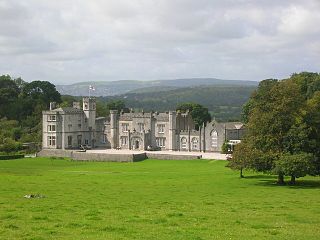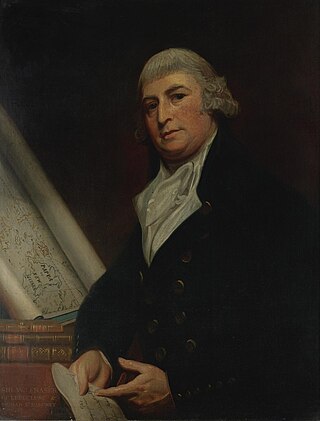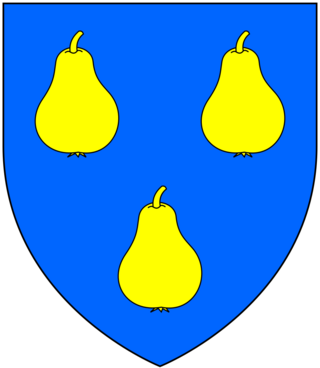
There have been seven baronetcies created for members of the Lowther family, one in the Baronetage of Nova Scotia, two in the Baronetage of England, two in the Baronetage of Great Britain and two in the Baronetage of the United Kingdom. Two of the creations are extant as of 2008.

There have been four baronetcies created for members of the Acland family, which originated in the 12th century at the estate of Acland in the parish of Landkey, North Devon, two in the Baronetage of England and two in the Baronetage of the United Kingdom.

There have been six baronetcies created for persons with the surname Middleton, four in the Baronetage of England, one in the Baronetage of Great Britain and one in the Baronetage of the United Kingdom. One creation is extant as of 2008.
There have been five Baronetcies created for people with the surname Forbes, four in the Baronetage of Nova Scotia and one in the Baronetage of the United Kingdom. The first holder of the Burn Baronetcy of Jessfield, created in the Baronetage of the United Kingdom in 1923, assumed the surname of Forbes-Leith of Fyvie in 1925.
There have been two baronetcies created for persons with the surname Ross, both in the Baronetage of the United Kingdom. One creation is extinct while one is still extant.

There have been nine baronetcies held by people with the surname Nugent, four in the Baronetage of Ireland and five in the Baronetage of the United Kingdom. Six of the creations are extinct, while three are extant.
There have been six baronetcies created for persons with the surname Brooke, one in the Baronetage of England, one in the Baronetage of Ireland and four in the Baronetage of the United Kingdom. As of 2015 four of the creations are extant, though one has been subsumed into a peerage.

There have been twenty one baronetcies created for persons with the surname Williams, eight in the Baronetage of England, three in the Baronetage of Great Britain and ten in the Baronetage of the United Kingdom. Only six of the creations are extant as of 2017.
There have been seven baronetcies created for persons with the surname Thompson, one in the Baronetage of England, one in the Baronetage of Great Britain and five in the Baronetage of the United Kingdom. Three of the creations are extinct while four are extant. See also Thomson baronets and Meysey-Thompson baronets.
There have been two baronetcies created for people with the surname Cholmeley, one in the Baronetage of England and one in the Baronetage of the United Kingdom. One creation is extant as of 2008. The family surname is pronounced "Chumley".

There have been four baronetcies created for persons with the surname Hope, three in the Baronetage of Nova Scotia and one in the Baronetage of the United Kingdom. As of 2010 one creation is extant, one dormant and two extinct.
The Mallinson Baronetcy, of Walthamstow in the County of Essex, is a title in the Baronetage of the United Kingdom. It was created on 6 July 1935 for William Mallinson. He was a Justice of the Peace for Essex. The second Baronet was a Deputy Lieutenant of Essex.
There have been three baronetcies created for persons with the surname Wells, all in the Baronetage of the United Kingdom. Two of the creations are extinct.

There have been seventeen baronetcies for persons with the surname Stewart, ten in the Baronetage of Nova Scotia, one in the Baronetage of Ireland and six in the Baronetage of the United Kingdom. See also Steuart baronets, Henderson-Stewart baronets, MacTaggart-Stewart baronets and Stewart-Clark baronets.

There have been five baronetcies created for persons with the surname Fraser, one in the Baronetage of Nova Scotia and four in the Baronetage of the United Kingdom. As of 2007 four of the creations are extinct while one is extant.
There have been three baronetcies created for persons with the surname Everard, one in the Baronetage of Ireland, one in the Baronetage of England and one in the Baronetage of the United Kingdom. Only one creation is extant as of 2010.
There have been seven baronetcies created for persons with the surname Lawrence, one in the Baronetage of England, one in the Baronetage of Great Britain and five in the Baronetage of the United Kingdom.

The Stucley Baronetcy, of Affeton Castle in the County of Devon, is a title in the Baronetage of the United Kingdom. It was created on 26 April 1859 for George Stucley, Conservative Member of Parliament for Barnstaple from 1855 to 1857. Born George Stucley Buck, he had assumed by Royal licence the surname of Stucley in lieu of his patronymic, on the death of his father, in 1858 as lineal representative of the ancient Stucley family. This family, which possessed Affeton Castle in Devon for over 600 years, originally came from the village of Stukeley in Huntingdonshire, and were sheriffs of that county during the reign of King John. The family are descended from Richard Stucley, of Trent, Somerset, and Elizabeth Fitzroger his wife. Their son, Hugh Stucley married Katherine Affeton, heiress of the Affeton estates, and was sheriff of Devon in 1448. The fifth Baronet served as a Deputy Lieutenant and High Sheriff of Devon.
There have been two baronetcies created for persons with the surname Hawkins, both in the Baronetage of Great Britain. One creation is extant as of 2008.
The Dalrymple-Hay Baronetcy, of Park Place in the County of Wigtown, is a title in the Baronetage of Great Britain. It was created on 27 April 1798 for Colonel John Dalrymple-Hay. Born John Dalrymple, he was the husband of Susan, daughter of Sir Thomas Hay, 3rd Baronet, of Park. On inheriting his father-in-law's estates in 1794 he assumed by Royal licence the additional surname of Hay. Four years later the baronetcy held by his father-in-law was revived in his favour. His grandson, the third Baronet, was an Admiral in the Royal Navy and Conservative politician. His third and youngest son, the fifth Baronet, was a Clerk in the Foreign Office from 1887 to 1895 and in the Privy Council Office from 1895 to 1928. On his death the line of the third Baronet failed and the title passed to the late Baronet's first cousin twice removed, the sixth Baronet. He was the eldest son of Brian George Rowland Dalrymple-Hay (1898–1943), a Colonel in the Indian Cavalry, son of George Houston Dalrymple-Hay (1865–1948), fifth son of George James Dalrymple-Hay (1828–1891), a Colonel in the Bengal Staff Corps, second son of the second Baronet. As of 2009 the title is held by the seventh Baronet's son, the eighth Baronet, who succeeded in January 2009.









